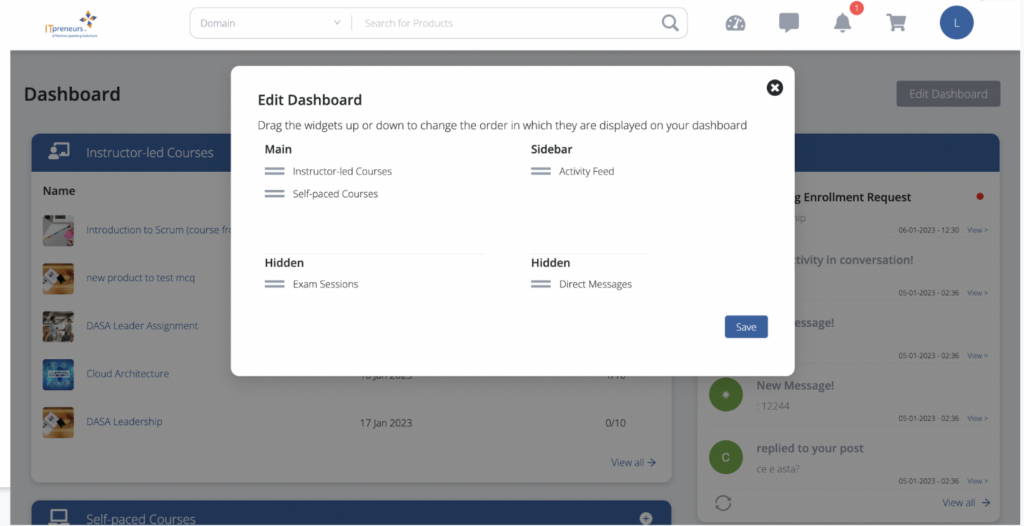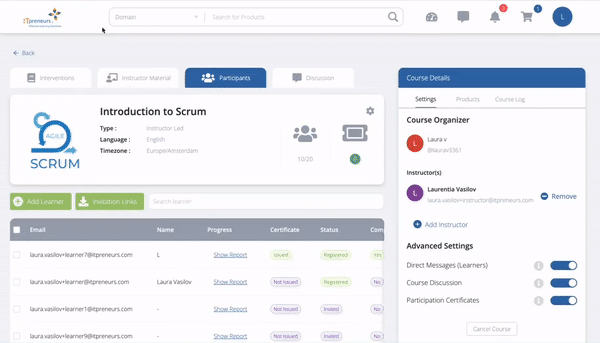In my last post, I discussed that understanding what Scrum means and that agile is not just ‘flexible’, but rather ‘quick and well-coordinated’, helps in my opinion, in putting it to practice effectively. In this article, I will dive deeper into the Agile rituals or events and why they are an integral aspect of the Agile methodology.
As discussed, in Scrum, four types of meetings take place regularly.
- Planning event: all stakeholders agree within a day when outcomes will be delivered in the next iteration of a maximum of four weeks.
- Daily stand-up: the professionals get together daily for a maximum of 15 minutes to tell what they did yesterday, what they will do today and what obstacles they need help with.
- Review: at the end of the two-to-four week work cycle, the professionals meet with the customer to show working products.
- Retrospective: the project team will get together to learn from the past iteration and use this in the new one coming.
From a knowledge perspective, they are easy to grasp by simply reading the Scrum Guide. Just a couple of paragraphs and that is it… right? Not so fast! Putting it to practice is the tricky part.
From a practical perspective, these meetings are much more difficult. Let’s start with what we should call them: rituals or events? A ‘ritual’ is something rooted firmly in a particular tradition with an almost spiritual or magical meaning. An ‘event’ is something that just occurs (planned or not). Scrum is both: very pragmatic and rooted deeply in practices established by professionals over the ages… “Ages?” you might wonder, “we’re talking about software, right?” Yes and these products are built by professionals, and historically, professionals have always been manufacturing products. Over the years, they have established a particular methodology that has led to the success that may not be easy to understand for those not familiar with the practice.
Highly skilled and experienced professionals often interact in a way that is difficult to understand for people who are not directly involved in the process. Some “magic” words are uttered and all present understand what’s going on and what needs to be done. Managers will be frustrated if they want to influence. In this sense, “ritual” is a pretty good name.
If we consider the sprint planning meeting and the sprint, this is what should happen:
- A manager or customer representative presents what is required to be delivered at the end of a four-week sprint. The team of developers will then plan in four hours which priorities will be delivered in the sprint and how they will do it. Undoubtedly many magic words will be spoken…
- The managers should only be concerned that a plan (backlog) is made with the right items. Next is the fulfillment in a sprint. Again, management should only be concerned with output. In the process, they can only assist by removing impediments or otherwise facilitate the work.
- Meanwhile, another ritual will take place daily. Referred to as the daily stand-up, professionals get together daily for a maximum of 15 minutes to share what they have done the day before, what they will do today and what obstacles they need help with.
Professionals just have to make sure they choose the right work… and within the right time frame. Performing the rituals regularly will help with that. Understanding the principles is not very difficult, learning to do it requires not only the right people but also the right training.
More information on Agile courses is available in the ITpreneurs Course Catalog.
Need more information? Please contact ITpreneurs.
About the author

Many organizations invest in training people. Often, staff is trained to pass exams and be certified. Does this make them change their way of working? I don’t think so.
Putting knowledge to practice is difficult. People need more than a certificate to be able to apply newly acquired knowledge. Therefore, I use (business) simulations in my training engagements.



